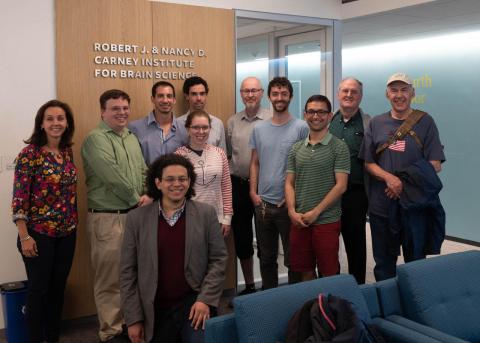New user-friendly software provides solution to longtime EEG challenge

Every other month the Carney Institute becomes a brainstorming hub for a team of computational neuroscientists working on new software that allows researchers and clinicians to test hypotheses on circuit mechanisms underlying data from electro- and magneto-encephalography (EEG/MEG).
The software, known as Human Neocortical Neurosolver (HNN), enables cellular- and network-level interpretation of non-invasive human EEG signals in health and disease. The goal is to put an easy-to-use interpretative tool in the hands of EEG researchers in hopes that it will transform their understanding of how the brain works, and lead to new diagnostic and treatment strategies for neuropathology.
“EEG is the most commonly used technology to record fast timescale activity non-invasively from the human brain,” said Stephanie Jones, an associate professor of neuroscience at Brown University who is affiliated with the Carney Institute for Brain Science. “Yet, we still have a limited understanding of how these signals are generated in the underlying cells and circuits.
HNN is a computational neural model that simulates the electrical activity of the neocortical cells and circuits that generate the primary electrical currents underlying EEG/MEG recordings. The software, which is already on the market, runs on all operating systems. The scientists provide virtual tutorials on how to import EEG/MEG data and to begin to understand the underlying circuit mechanisms.
According to Jones, scientists from Brown, Massachusetts General Hospital, Yale University, and SUNY Downstate Medical Centerare are developing new features for HNN, including parameters optimization and tools to simulate electrophysiological measures that enable model validation with invasive recordings.



